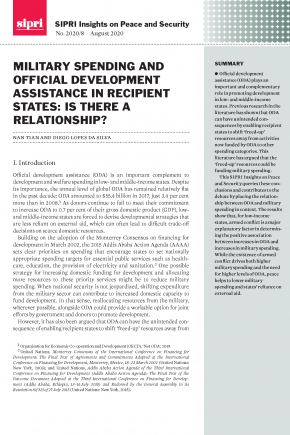Military Spending and Official Development Assistance in Recipient States: Is there a Relationship?
Official development assistance (ODA) plays an important and complementary role in promoting development in low- and middle-income states. Previous research in the literature has shown that ODA can have unintended consequences by enabling recipient states to shift ‘freed-up’ resources away from activities now funded by ODA to other spending categories. This literature has argued that the ‘freed-up’ resources could be funding military spending.
This SIPRI Insights on Peace and Security queries these conclusions and contributes to the debate by placing the relationship between ODA and military spending in context. The results show that, for low-income states, armed conflict is a major explanatory factor in determining the positive association between increases in ODA and increases in military spending. While the existence of armed conflict drives both higher military spending and the need for higher levels of ODA, peace helps to lower military spending and states’ reliance on external aid.
I. Introduction
II. Official development assistance and military spending
III. Analytical strategy and data
IV. How do ODA recipients allocate military spending?
V. Do changes in military spending correlate with changes in ODA in low-income states?
VI. Country case studies
VII. Conclusions


